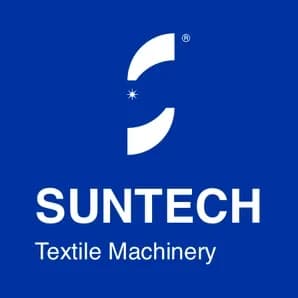
Introduction
With the improvement of global environmental awareness, eco-textiles, as a key path for the sustainable development of the textile industry, are becoming the focus of global attention. We should not only pay attention to the quality and price of textiles but also examine the impact of their production process on the environment and society. Eco-textiles are the only way to promote the transformation and upgrading of the textile industry by adopting green production methods, using sustainable materials and technologies, and reducing the consumption of natural resources and environmental pollution. As a member of the textile industry, SUNTECH must also adhere to green environmental protection.
The Difference Between ECO-Textiles and Traditional Textiles
In the process of pursuing efficient production and large-scale production, the traditional textile industry often ignores the waste of resources and environmental pollution. The extensive use of chemical dyes, artificial synthetic fibers, and water resources has not only aggravated the tension of natural resources but also brought serious environmental pollution. Eco-textiles emphasize reducing resource waste and environmental pollution in the production process and are committed to providing consumers with green, safe, and environmentally friendly products.
The Core Principles of ECO-Textiles
Ecological textiles are not just a simple material substitution, but a systematic concept that covers environmental protection requirements in all aspects from raw material selection to production processes, transportation, and sales. Its core principles include:
Resource conservation: maximize resource utilization by using renewable resources and reducing water, electricity, and energy consumption.
Environmental protection: reduce the discharge of wastewater, waste gas, and solid waste, and protect the ecosystem from pollution.
Social responsibility: ensure the rights of workers and the sustainable development of the community, and promote fair trade.
Green raw materials: the basis of ecological textiles
In ecological textiles, the choice of raw materials is crucial. Natural materials such as organic cotton, bamboo fiber, and hemp fiber have become the first choice for environmentally friendly production. At the same time, the use of ecological dyes avoids the harmful chemicals contained in traditional dyes. These environmentally friendly dyes are not only environmentally friendly but also harmless to the human body.
In addition, more and more companies are beginning to use renewable fibers, such as polyester fibers made from recycled plastic bottles. These innovative materials greatly reduce resource waste and give sustainability to products.
Innovation of ECO-Textile Technology
With the advancement of science and technology, the technology of eco-textiles is also constantly innovating. For example, the research and development of biodegradable fibers enables textiles to decompose quickly after their service life ends, reducing the burden on landfills. In addition, the popularization of water and energy-saving technologies makes textile production more efficient and environmentally friendly.
Circular Economy
The concept of circular economy in the textile industry refers to extending the life cycle of products through the recycling and reuse of waste textiles. Many brands and companies have begun to implement textile recycling programs to reprocess and regenerate discarded clothing into new textiles or raw materials. This not only saves resources but also reduces waste emissions and has a positive impact on the environment.
Global Practice of ECO-Textile
Globally, many countries and regions have formulated policies and regulations to support the development of eco-textiles. For example, some European countries have implemented mandatory regulations on textile recycling and waste management. In addition, many international brands are also constantly promoting green transformation, and many large textile companies are reducing their carbon footprint by improving production processes and raw material selection.
Challenges Faced by ECO-Textile
Although eco-textiles have many advantages, they still face some challenges in the promotion process. First, the production cost of eco-textiles is high, especially in the initial stage, and many companies need to invest a large amount of money in technology upgrades. Secondly, consumers' awareness of eco-textile products is not sufficient, and the market demand is relatively limited.
Economic Benefits of ECO-Textile
Although the initial cost is high, in the long run, the economic benefits brought by eco-textiles to enterprises are obvious. With the growth of market demand for green and environmentally friendly products, eco-textiles have gradually become the mainstream products in the market. Through green transformation, enterprises can not only win the favor of consumers but also enjoy government policy support and subsidies.
Combination of ECO-Textile and Fashion
In recent years, sustainable fashion has gradually become a trend, and more and more fashion brands have begun to pay attention to the use of environmentally friendly textiles. Consumers' demand for environmentally friendly and green textiles continues to rise, and many brands have also injected more environmental protection concepts into their designs, making eco-textiles occupy an important position in the fashion industry.
The Role of Policies and Regulations in Promoting ECO-Textile
Many countries have introduced policies to encourage enterprises to make green transformations. For example, the EU's increasingly stringent environmental protection requirements for textiles have promoted the green transformation of the global textile industry. China has also promoted the development of eco-textiles through policies such as green manufacturing and low-carbon development.
The Positive Impact of ECO-Textile on the Environment
Ecological textiles can not only reduce pollution emissions in the production process but also reduce the consumption of water and land resources. By using degradable fibers and environmentally friendly dyes, eco-textiles can effectively reduce the negative impact on the natural environment.
Conclusion
In the future, with the continuous advancement of science and technology and the improvement of consumers' environmental awareness, eco-textiles will usher in a broader development prospect. The green transformation of the industry will drive the sustainable development of the textile industry and become an important development direction of the global textile industry.
The key factors promoting the development of eco-textiles include green innovation of enterprises, policy support of the government, and green consumption awareness of consumers. With the continuous advancement of technology and the increase in market demand, eco-textiles will become the mainstream of the development of the textile industry in the future.







